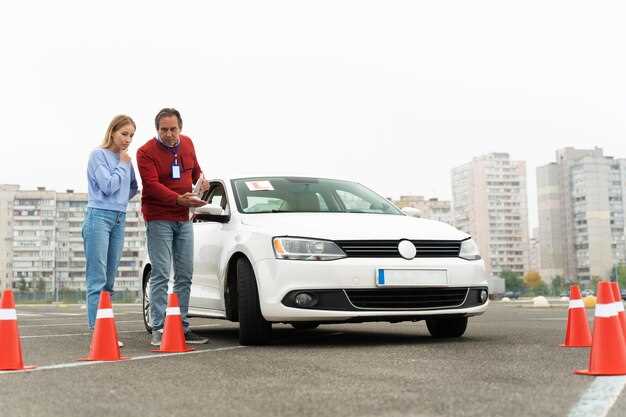
When it comes to hitting the racetrack, ensuring that your vehicle arrives safely and in pristine condition is paramount. Proper hauling techniques not only protect your investment but also help you focus on what matters most: performance and competition. Whether you’re a seasoned racer or a first-time participant, understanding the nuances of vehicle transport can enhance your overall experience.
Choosing the right method for transporting your vehicle is essential. With various options available, it’s crucial to assess your specific needs. Enclosed trailers provide maximum protection from the elements, while open trailers are more economical and easier to access. Regardless of your choice, the emphasis should always be on safety, both for your vehicle and for those sharing the road.
Additionally, familiarizing yourself with proper loading techniques and securing measures is vital. Employing quality straps and tie-downs can significantly reduce the risk of damage during transit. Regularly checking your vehicle’s weight distribution and ensuring that all parts are secured can make a substantial difference in the safety of your haul. With the right preparation, you can look forward to a smooth journey to the racetrack.
Choosing the Right Trailer for Your Vehicle

When it comes to hauling your vehicle to the racetrack, selecting the right trailer is crucial for ensuring safety and convenience. The first step in making this decision is to know your vehicle’s specifications, including its weight and dimensions. This information will help you determine the appropriate trailer type and size that can accommodate your vehicle comfortably.
There are several types of trailers available, with the most common being open trailers and enclosed trailers. Open trailers are typically more affordable and provide easy access to your vehicle. They are suitable for race cars that do not require protection from the elements. However, exposure to weather conditions can lead to wear and tear, making enclosed trailers a preferred choice for many racers. These trailers offer added security and protection from rain, dust, and debris while hauling your vehicle.
When assessing trailers, consider their weight capacity and ensure that it exceeds your vehicle’s weight. Additionally, pay attention to the trailer’s axle and tire specifications, as these components are vital for safe transportation. Heavy-duty axles can handle rough roads better, while quality tires improve stability during travel.
Make use of features like loading ramps and tie-down points to simplify the hauling process. A trailer with a built-in loading ramp allows for easy drive-on access, which can save time and reduce the risk of damage during loading and unloading. Proper tie-down points are essential for securing your vehicle, preventing any movement during transit, which can lead to potential damage.
Lastly, consider your vehicle’s tow capacity and the towing vehicle’s compatibility with the trailer’s hitch system. Ensure that your towing vehicle can handle the combined weight of the trailer and the vehicle being hauled. This assessment will not only ensure compliance with safety standards but will also provide peace of mind while driving to the racetrack.
Preparing Your Vehicle for Hauling

Before transporting your vehicle to the racetrack, proper preparation is essential for a smooth and safe hauling process. Start by cleaning your vehicle to remove any dirt and debris, allowing for a thorough inspection. Check the tire pressure and ensure that all tires, including the spare, are in good condition and properly inflated.
Next, inspect fluid levels including oil, coolant, and brake fluid. Topping off these fluids can prevent potential issues during transport. Disconnect the battery to avoid drainage, especially if the vehicle will be on the trailer for an extended period. Ensure that any loose parts, such as mirrors and antennas, are secured or removed to prevent damage.
If your vehicle has any modifications, like oversized tires or a lowered suspension, confirm that it will fit securely on the trailer without any obstructions. It’s also crucial to ensure that the trailer itself is suitable for your vehicle’s size and weight. Properly readjust the trailer’s ramp and tie-down points to accommodate your vehicle’s specifications.
Finally, double-check that all lights and signals on the trailer are working correctly. This will enhance visibility during travel and maintain safety on the road. With these steps, you can confidently prepare your vehicle for hauling, ensuring not just its protection but also compliance with road safety regulations.
Ensuring Safe Loading and Unloading Procedures
To transport your vehicle to the racetrack effectively, establishing safe loading and unloading procedures is crucial. Begin by selecting a suitable trailer that matches the dimensions and weight of your vehicle. Ensure the trailer is in excellent condition, with functional ramps and secure tie-down points.
Before loading, prepare the area by eliminating obstacles and ensuring adequate lighting. Position the trailer on a level surface to enhance stability. Utilize a spotter to guide the vehicle as it approaches the trailer, reducing the risk of accidents. When using ramps, check that they are securely attached and capable of supporting the vehicle’s weight.
As you load the vehicle, drive slowly and steadily while keeping a straight trajectory. Avoid sudden movements that could affect the balance of both the vehicle and the trailer. Once the vehicle is on the trailer, engage the parking brake, and place wheel chocks around the tires for added security.
When unloading, reverse the process carefully. Timing and communication with your spotter are critical to maintaining safety. Ensure the trailer is anchored securely before removing the tie-downs. Gradually roll the vehicle off the trailer, keeping the wheels aligned with the ramps. Properly executed loading and unloading will help prevent damage to both the vehicle and the trailer.
